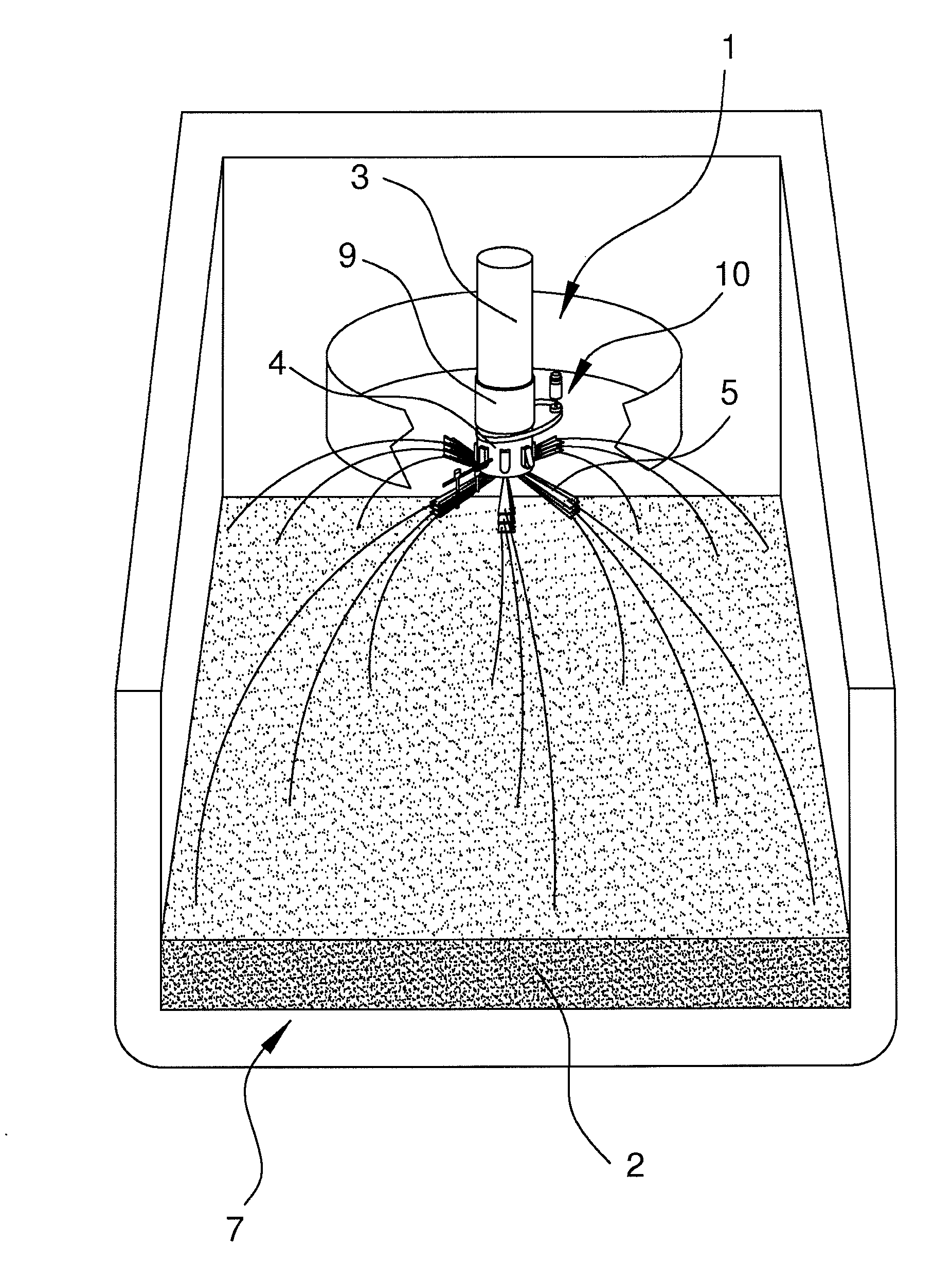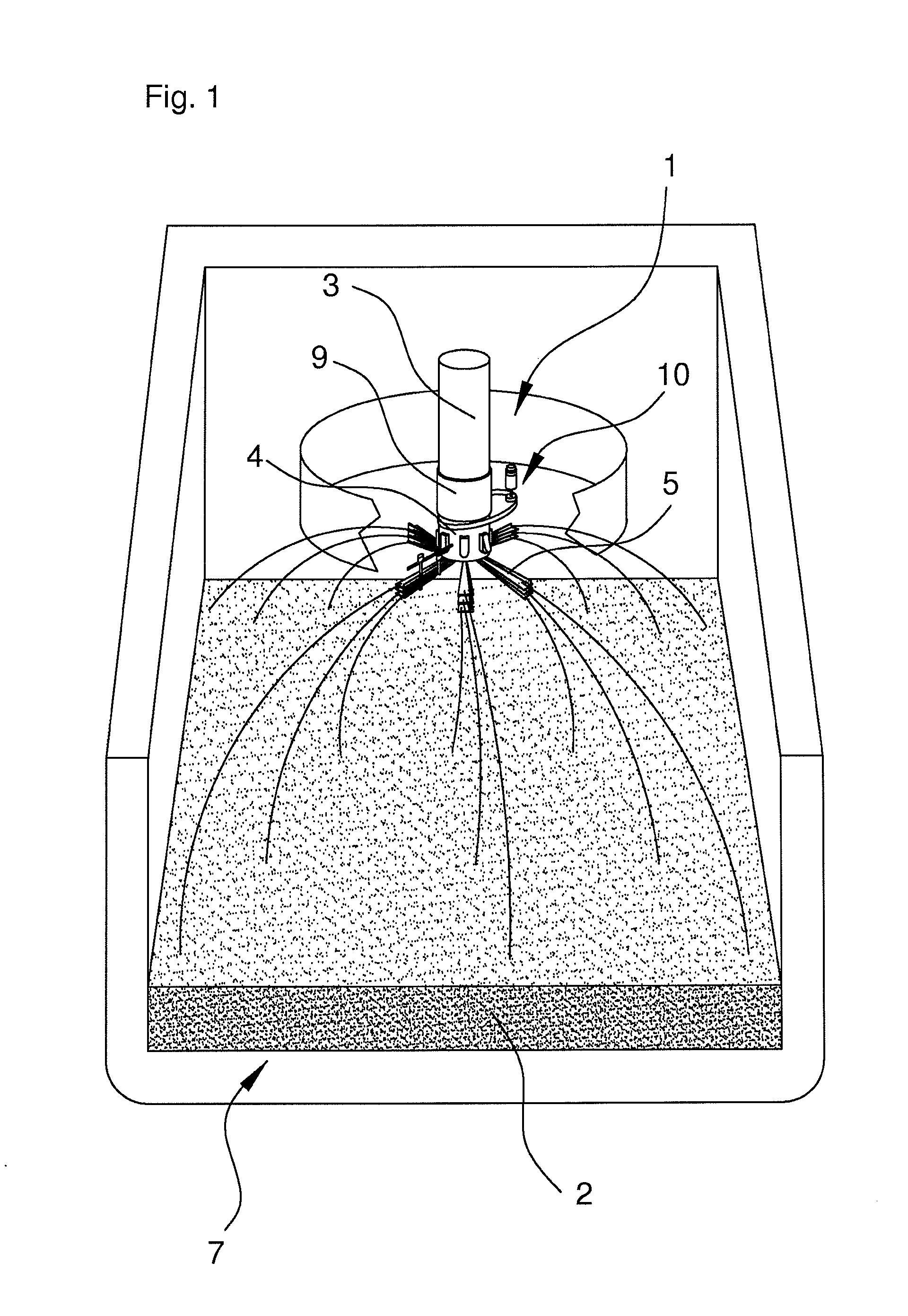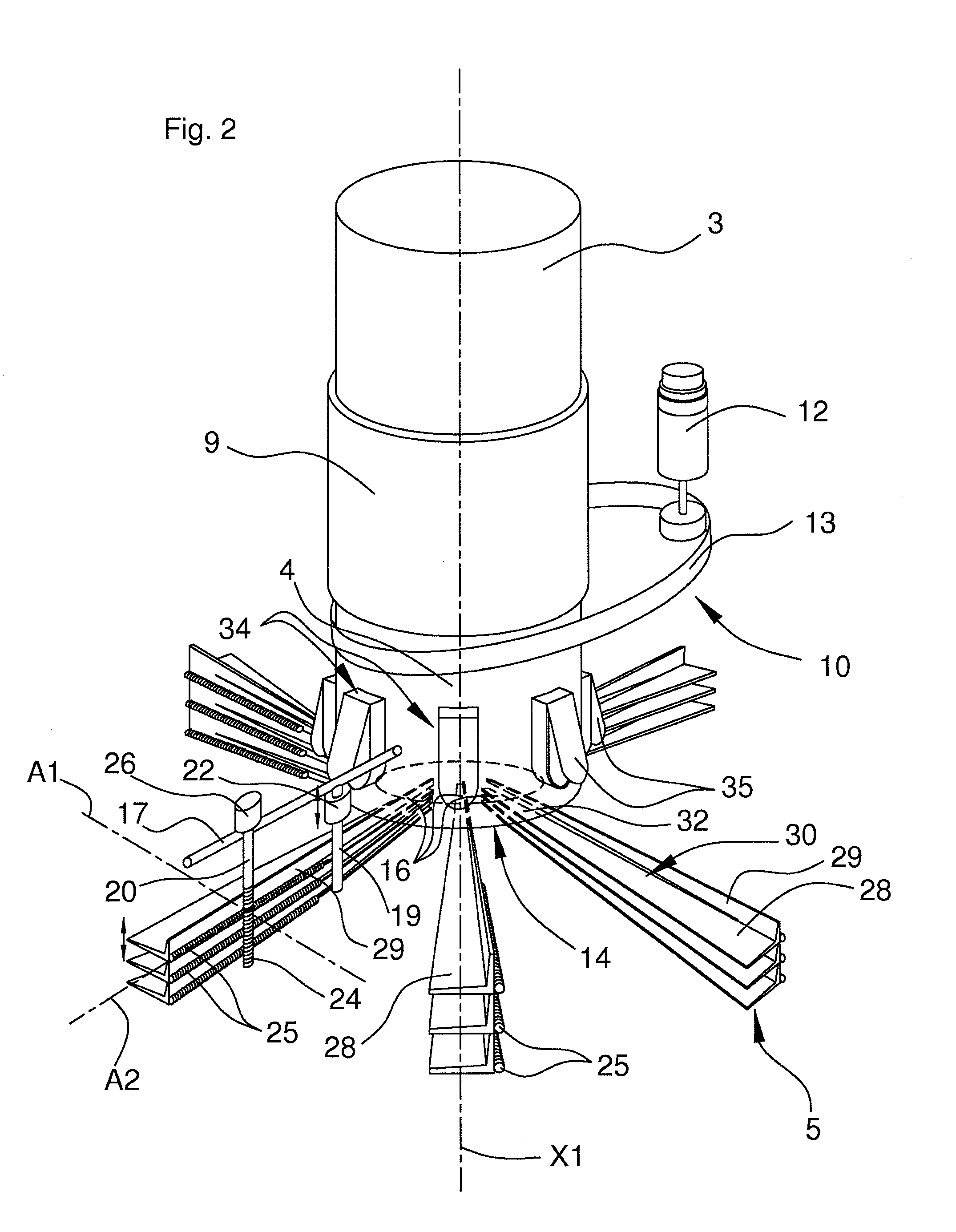Device for densely loading a divided solid into a chamber
a technology of divided solids and chambers, which is applied in the direction of liquid bottling, packaging goods types, special packaging, etc., can solve the problems of not being able to independently adjust parameters, devices less suited to loading the holds of ships such as bulk carriers, and endanger the stability of ships
- Summary
- Abstract
- Description
- Claims
- Application Information
AI Technical Summary
Benefits of technology
Problems solved by technology
Method used
Image
Examples
embodiment (
EMBODIMENT(S) OF THE INVENTION
[0033]FIG. 1 illustrates, by way of non-limiting example and schematically, the principle of the operation of the dense loading device according to the present invention.
[0034]The dense loading device 1 is supplied with cereal grains 2 from a primary storage site, through a pipe, generally at a fixed rate, opening out into a chute 3. The use of a conventional buffer hopper between the pipe and the chute can be provided without going beyond the scope of the invention.
[0035]The loading device 1, arranged in alignment with the chute 3, comprises a rotating member 4, crammed full of grains from the pipe, having a plurality of openings (described in more detail in relation to FIG. 2) intended to homogeneously distribute the grains over a set of deflecting elements 5.
[0036]The stream of grains must preferably be broken up as much as possible in order to optimize the distribution of the grains before they are acted on by the deflecting elements. The grains the...
PUM
| Property | Measurement | Unit |
|---|---|---|
| angle | aaaaa | aaaaa |
| surface area | aaaaa | aaaaa |
| rotational speed | aaaaa | aaaaa |
Abstract
Description
Claims
Application Information
 Login to View More
Login to View More - R&D
- Intellectual Property
- Life Sciences
- Materials
- Tech Scout
- Unparalleled Data Quality
- Higher Quality Content
- 60% Fewer Hallucinations
Browse by: Latest US Patents, China's latest patents, Technical Efficacy Thesaurus, Application Domain, Technology Topic, Popular Technical Reports.
© 2025 PatSnap. All rights reserved.Legal|Privacy policy|Modern Slavery Act Transparency Statement|Sitemap|About US| Contact US: help@patsnap.com



